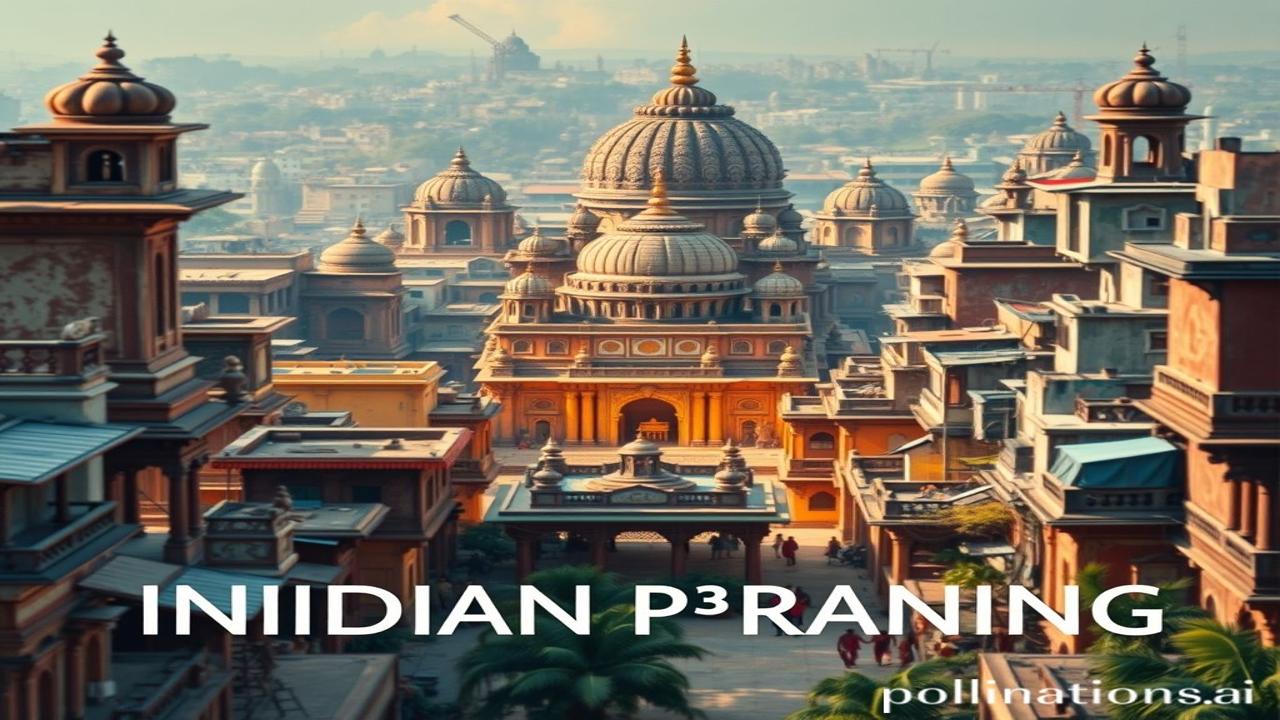Waqt Ki Dhool Mein Dabi, Shehron Ki Kahani: Ancient Urban Planning in Indian Cities
Kabhi socha hai, ki jo imaratein aaj hum dekhte hain, unke neeche kitni kahaniyan dabi hain? Imagine, aaj se hazaaron saal pehle, jab duniya itni modern nahi thi, tab Bharat mein cities plan kiye jaate the! This isn’t just history; it’s about understanding our roots, our ingenuity, and the vision our ancestors had for a better, organised life. Yeh ek aisi journey hai, jahaan waqt ki dhool mein dabi, shehron ki kahani hume intzaar kar rahi hai.
Sindhu Ghati Sabhyata: The Blueprint of Ancient Urban Planning
Let’s rewind the clock about 5000 years! We’re talking about the Indus Valley Civilization (Sindhu Ghati Sabhyata) – a time between 3300 to 1700 BCE. Think Harappa, Mohenjo-daro, Dholavira – names that echo with history. This wasn’t just some random settlements; these were meticulously planned urban centers.
Why is this important? Because these cities demonstrate an understanding of sanitation, engineering, and social organization that was way ahead of its time. Unki planning se pata chalta hai ki woh sirf jeete nahi the, balki unhone ek disciplined aur organised tareeke se jeena chaha tha. They wanted to create spaces where people could thrive, not just survive. This shows a deep respect for community and a forward-thinking approach to city life.
Mohalle, Naliyan, Aur Bazaar: A Glimpse into Daily Life
Imagine walking through the wide, straight streets of Mohenjo-daro. Ghar eent ke bane hain, sab ek jaise dikhte hain – standardization was a thing back then!
Picture this:
- A typical day: Subah, ek kisan apne bailon ke saath kheton mein jata hai. Shaam ko, artisan apne workshop mein mitti ke bartan bana raha hai.
- Sanitation: Har ghar mein pakki hui eeton ka bathroom hai, aur naliyon ka ek complex system hai jo city ke waste ko door le jata hai. Itna advanced system uss zamane mein!
- Marketplace Buzz: Bazaar mein halchal hai. Log masalon, kapdon, aur bartanon ka trade kar rahe hain. The air is thick with the smell of spices and the sounds of bargaining.
- Ma Rukmini’s Day: Imagine Ma Rukmini, adorned in simple cotton clothes and terracotta jewelry, carefully collecting water from the community well, ensuring her family has enough for the day. Her laughter echoes with the children playing in the courtyard.
In cities like Mohenjo-daro, social stratification also existed. Some homes were larger, suggesting a hierarchy in society. But what stands out is the overall commitment to cleanliness and order.
Aaj Ki Dharohar: Sindhu Sabhyata Ki Chhaya
Even today, we can see echoes of ancient urban planning in modern India. The emphasis on organized layouts, sanitation, and efficient resource management finds its roots in the lessons learned from the Indus Valley Civilization.
- Modern Urban Planning: Many modern Indian cities strive for planned layouts and efficient infrastructure, albeit with varying degrees of success. Concepts like grid layouts and proper drainage systems are not new inventions; they were perfected millennia ago.
- Swachh Bharat Abhiyan: The modern initiative for cleanliness and sanitation resonates with the ancient emphasis on hygiene and well-being. It reminds us that cleanliness is not just a modern concern but a timeless value.
- Bharatiyata Connection: The meticulous planning and community focus of the Indus Valley cities reflect a deep-rooted sense of Bharatiya identity – a commitment to collective well-being and a harmonious coexistence with nature.
Myth-Buster: “Sindhu Sabhyata Mein Sab Sant The?”
Log samajhte hain ki Sindhu Sabhyata ke log sirf shanti priya the, lekin asli sach yeh hai ki unhone apne sheharon ko strong fort walls se protect kiya tha. While evidence of warfare is limited compared to other ancient civilizations, the fortified walls and standardized housing suggest a degree of social control and potential conflict resolution within the community. It was not necessarily a utopian society, but a well-organized one with its own complexities and challenges.
Sensory Immersion: The Sounds and Smells of an Ancient City
Imagine standing at the edge of Mohenjo-daro.
- The air: The air is dry and dusty, carrying the faint scent of woodsmoke and the earthy smell of the river.
- The walls: The sun-baked brick walls feel warm and rough to the touch.
- The sounds: You hear the rhythmic pounding of artisans shaping clay, the bleating of goats in the distance, and the murmur of conversations in the marketplace.
The sensory experience is immersive, connecting you to a bygone era and allowing you to imagine the lives of the people who once thrived in these ancient cities.
Antim Vichar: Gyaan Ka Prakash
“न हि ज्ञानेन सदृशं पवित्रमिह विद्यते” (Na hi jñānena sadṛśaṃ pavitramiha vidyate) – “There is nothing as purifying as knowledge.” The ancient cities of India stand as a testament to the power of knowledge, innovation, and a deep understanding of the human condition. Let us learn from their legacy and strive to build a better future, rooted in the wisdom of our past.
